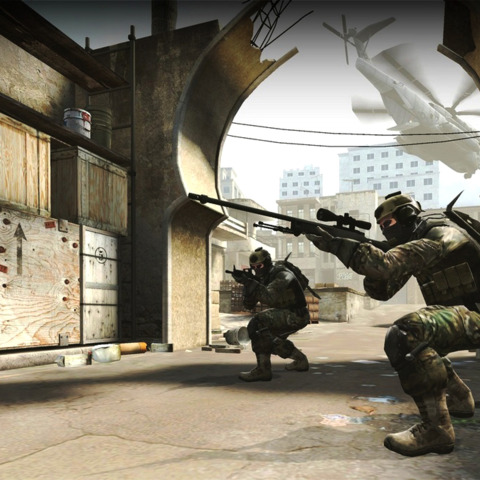Though Wolfenstein 3D was the genesis of the first-person shooter, it was id Software's 1993 follow-up, Doom, that popularised it. As a lone space marine taking on the hordes of hell itself, you sprinted through abandoned moon bases scrounging for health and armour pickups, all while keeping demons at bay with shotguns, rocket launchers, and plasma rifles.
When replayed today, elements of Doom may seem archaic, or even quaint. The only time you were interrupted by the plot was when a text crawl appeared at the end of every nine-level episode. You progressed through levels by searching for coloured keys to open coloured doors. Heath didn't regenerate, and you could carry every weapon, all of which could fire without reloading until you ran out of ammo. With these mechanics, Doom was the game that defined what an old-school first-person shooter played like. But the game still offers insightful lessons for the creators of modern shooters.
Matthias Worch, design director at 2K Games on an unannounced project, and former lead designer of the cancelled Star Wars: 1313, got his start in the industry by making custom Doom maps. It's an experience that he has found to be invaluable throughout his career, and is something he elaborated on in a Game Developers Conference talk earlier this year. I spoke to Worch about three lessons shooters can still learn from the things Doom accomplished more than 20 years ago.
Starfield May Update Disney Dreamlight Valley – Thrills & Frills Update Trailer LEGO Fortnite | Star Wars Rebel Adventure Cinematic Trailer Apex Legends - Official Alter Legend Animated Reveal Trailer | "Based on a True Story" Batman: Arkham Shadow | Official Cinematic Teaser Trailer Mullet MadJack - Official Gameplay Trailer EARTH DEFENSE FORCE 6 - Official Release Date Reveal Trailer Street Fighter 6 - Akuma Arrives! Fighting Pass Reveal Trailer SMT V: Vengeance Is Much Bigger Than You Think Which Fallout Game You Should Play First Funko Fusion - Official Reveal Trailer Star Wars: Hunters -Official Launch Date Reveal Cinematic Trailer
Please enter your date of birth to view this video
By clicking 'enter', you agree to GameSpot's
Terms of Use and Privacy Policy
1. VARIED BUT READABLE ENEMIES
Taken individually, Doom's demons were simple. There was the shotgun zombie, who fired a hitscan weapon (one that doesn't have a visible projectile, such as an instant-hit bullet) from a distance. There was the imp, who threw slow-moving fireballs which could be dodged whilst the demon closed the distance to you. Every other demon featured some combination of these simple properties. This made them individually readable. In a mixed group, each demon's bright colour palette, along with the fact that they had at most two behaviours, helped you to identify them and choose which one to prioritise shooting first. For example, demons that threw slow, easily dodged projectiles could be shot later, as long as you kept moving and didn't find yourself backed into a corner.
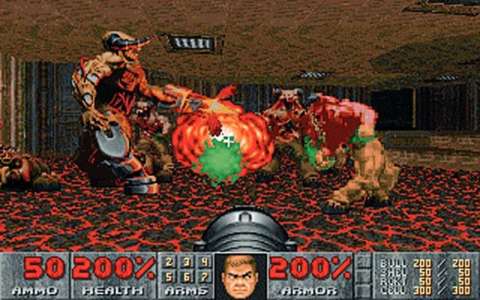
"Good game design combines individually predictable elements into a semi-predictable whole that doesn't exceed the bounds of readable complexity," says Worch. "Doom chose to distribute its readability across large numbers of enemies with simple behaviours."
In today's shooters, the enemies are often human and present far more complex behaviour than any of Doom's demons. They take cover, they throw grenades, they flank you, and they work in tandem with other enemies, calling for backup or laying down covering fire. Though such enemies could be seen to present a deeper combat experience to Doom, Worch believes that there is a limit to the amount of complexity you can process in any one encounter. "Other games [than Doom] might choose to embed additional behavioural complexity in fewer enemies, and that is fine as long as the overall bounds of gameplay complexity are not stretched too much." This complexity is fine, but readability is still paramount.
"One exception might be games that try to create an overall feeling of uncertainty and being overwhelmed," Worch adds. "In a game like The Last of Us or Tomb Raider, player and character are never supposed to feel fully in control of any situation, and enemy behaviours can contribute to that aesthetic."
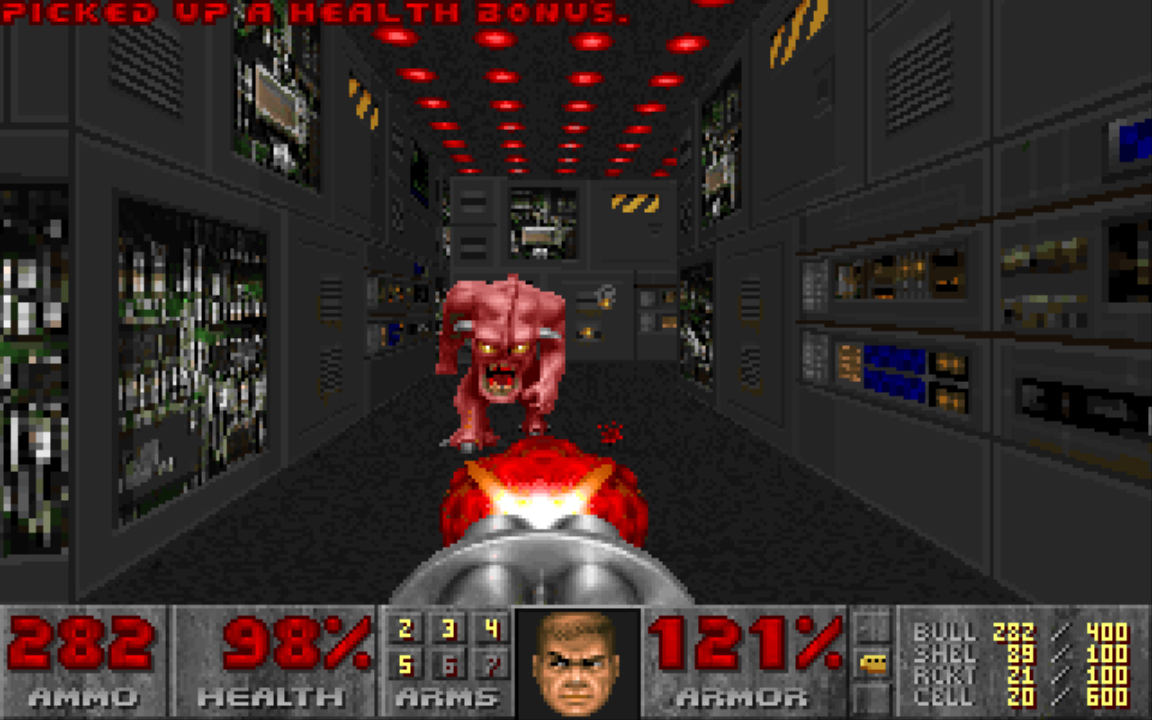
2. A HIGH SKILL CEILING
As an early pseudo-3D game, Doom did not require you to manually aim up or down to shoot enemies on different elevations; bullets would automatically find their mark as long as you lined the demon up horizontally. "The fact that height did not directly factor into aiming helped players get acquainted with the genre because they did not have to consider enemies who were on top of one another--effectively, all enemies were lined up in front of or behind each other," says Worch.
The mastery that players are able gain over Doom is significant: the delta between novice and expert players is huge.
Once you were acquainted with the genre, this fact, combined with the simple, readable behaviour of the demons, made Doom play more like a first-person Robotron than what we consider to be a shooter today. It put greater importance on constant movement and management of space between you and the enemy, rather than relying on manual dexterity to acquire and shoot a target. This allowed for the existence of a high skill ceiling--which made expert play look significantly different to novice play--because there was greater scope for creativity in movement than in pointing and shooting. "The mastery that players are able to gain over Doom is significant: the delta between novice and expert players is huge, and there are a whole bunch of tricks and tactics that don't reveal themselves at first," says Worch.
A player who has mastered movement and spacing could take down a massive, varied horde of demons without suffering so much as a scratch. For a novice player, the sense that they could reach that mastery was tangible because the behaviour of each demon in that horde was simple and readable.
In Doom's case, that skill ceiling was further raised by the fact that your health did not regenerate. Health and armour pickups had to be found throughout the level, and your current health state always needed to be in the back of your mind. "The additional resources to be tracked by the player add to the decision making," says Worch. "A game with regenerating health/armour regularly resets the player state and eliminates these kinds of midterm motivation loops."
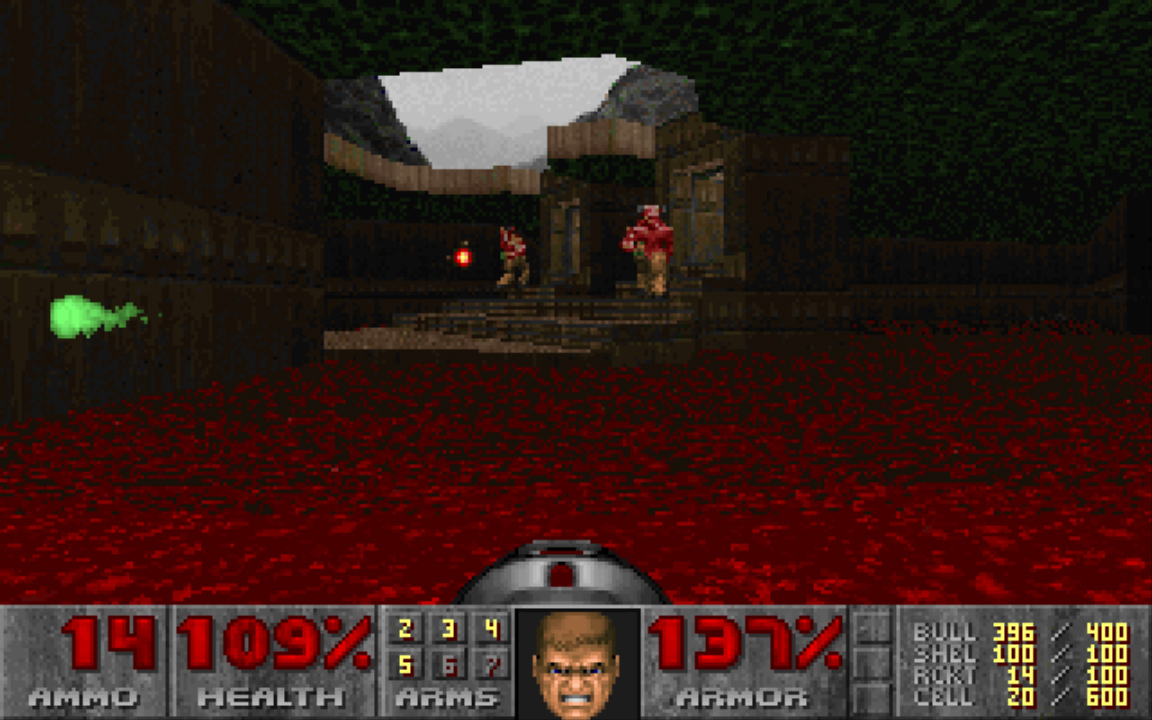
3. LEVEL DESIGN IS KING
Doom's levels were almost entirely abstract spaces, offering vague approximations of abandoned moon bases and hellish environments. This worked to increase both the readability of enemies against the environment and the game's high skill ceiling. Without the need to create believable, realistic spaces, Doom's level designers were able to focus on creating levels that offered interesting and challenging combat encounters first and foremost. You only have to look at the difference in Doom 3's combat to see why abstraction can be handy--that game's own tight grey corridors saw mere handfuls of grey demons focus more on jump scares, thereby severely limiting the scope for a similarly high skill ceiling to flourish.
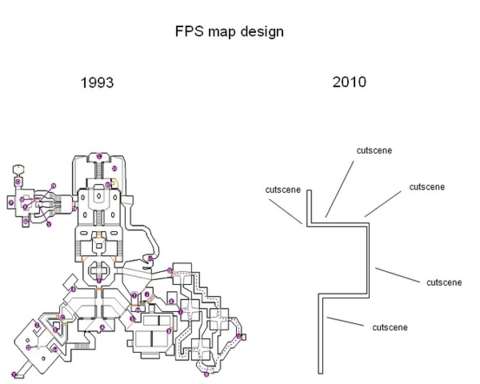
Further serving Doom's abstraction was the now-archaic notion of collecting coloured keys to progress through a level. "With coloured keys, level designers could telegraph structure by dividing the level into a series of midterm goals, which allowed the player to track progress through a level easily," says Worch. "The coloured gates had the added benefit of being unlocked via high-value pickups--pickups around which entire room/trap progressions could be built. A key sitting alone in the middle of a room was always suspicious!"
In addition to presenting more realistic levels, modern games tend to contextualise such progression with more believable methods, like a scripted cutscene. "But if they do so in a completely arbitrary manner (usually via story beats), players are never able to tune into the rules gating that progression, and players are never able to track their progress reliably," Worch elaborates. "The lesson is that gating elements should be recurrent, systemic, and occur with sufficient density and regularity to establish a formula that players understand. Modern equivalents to those coloured keys are keypads that lock doors (where the key is a discoverable code), or fingerprint/eye scanners tied to a specific enemy in the environment to be captured. Both systems can be repeated throughout the game and create understandable level progressions without feeling out of place."
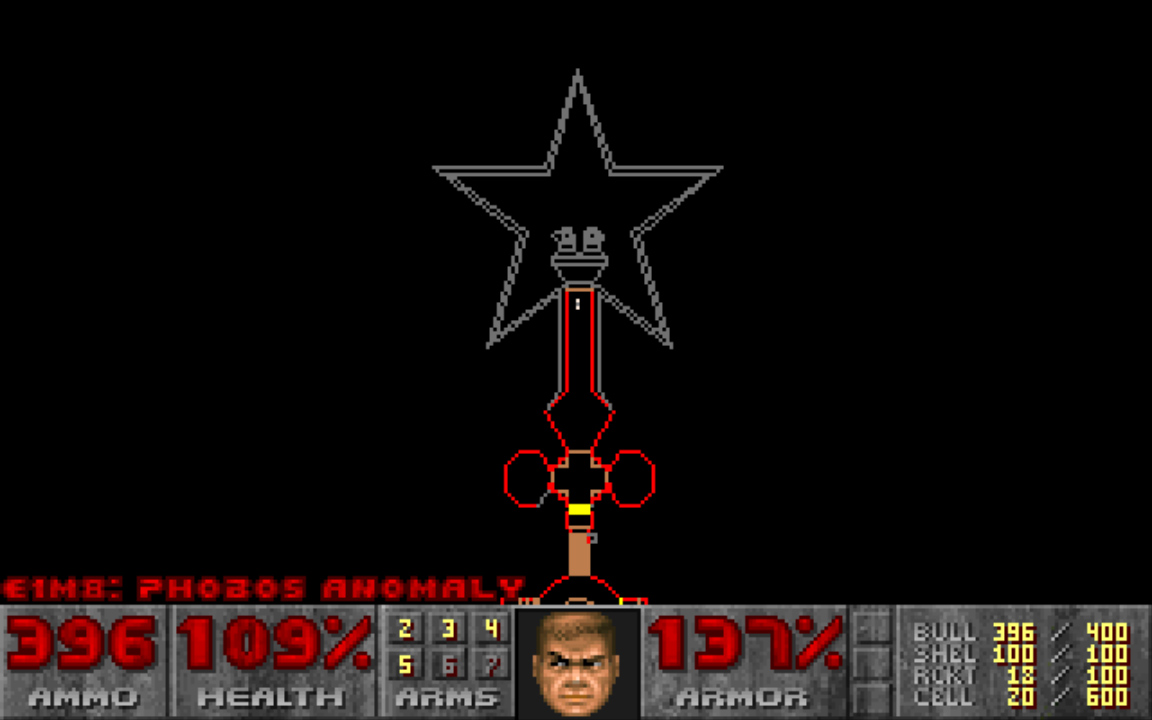
CLASS DISMISSED
These lessons are not prescriptive. Rather, each type of shooter should pick and choose to learn from the lessons that best apply to it. A cinematic, plot-heavy shooter might opt for regenerating health to maintain your forward momentum and avoid interrupting the story too often. Worch does not see such decisions as being to the detriment of the core lessons Doom can still teach.

"I feel that we are simply witnessing a pendulum that is swinging back and forth between designers' desire to create believable/experiential games, versus (for lack of a better term) 'gamey'/systemic/expressive games," he says. "But there isn't one jump-off point in history where that pendulum clearly stayed on one side--we can track highly expressive games like Doom, Halo, and Dead Space 2 across the last two decades, as more experiential, roller-coaster shooters started appearing."
Still, with today's most popular shooters emphasising their fancy new engines, physics systems, complex scripted sequences, and progression through unlock trees, it's worth looking back at a shooter from a simpler time and understanding why it still offers such a unique experience even today.
